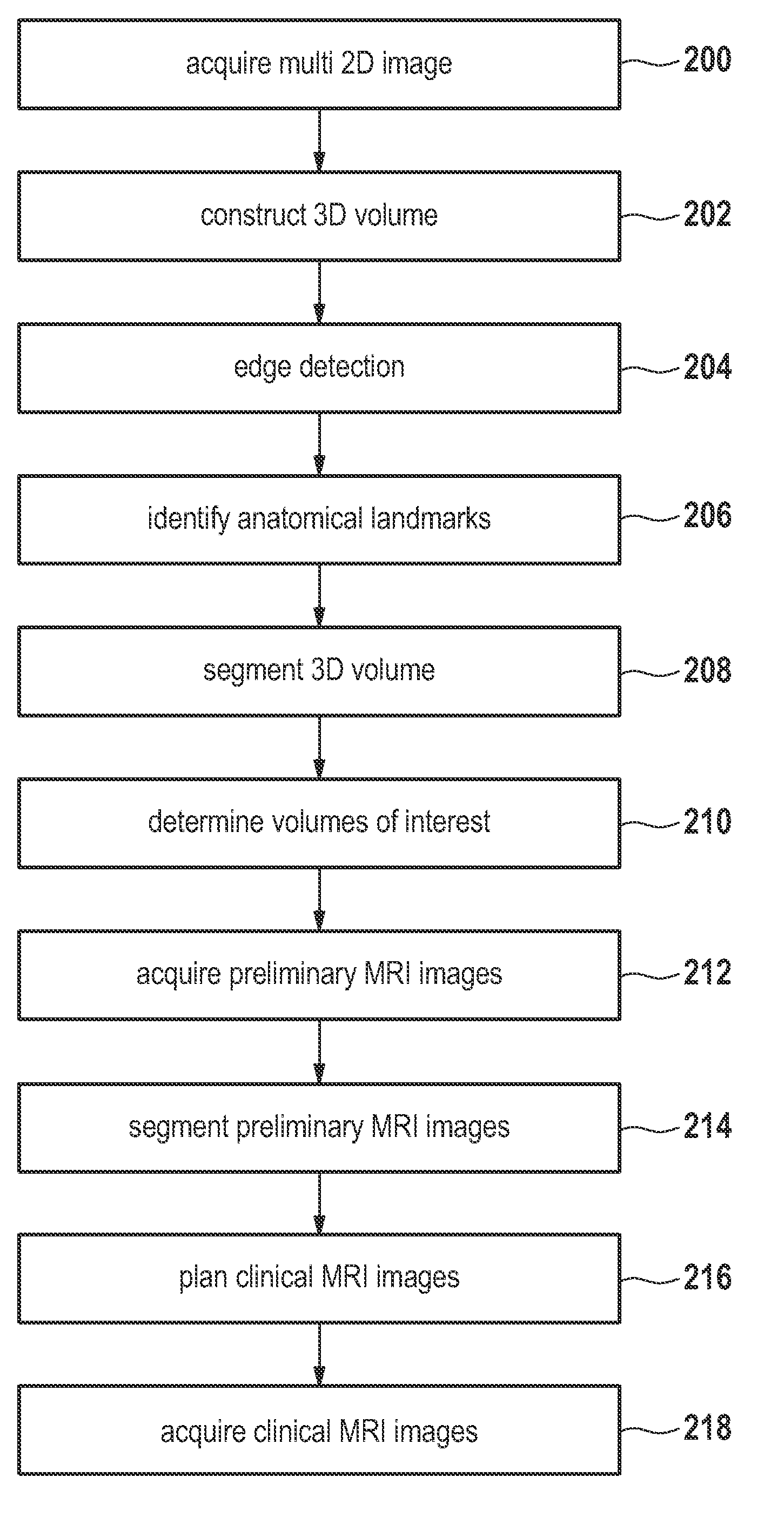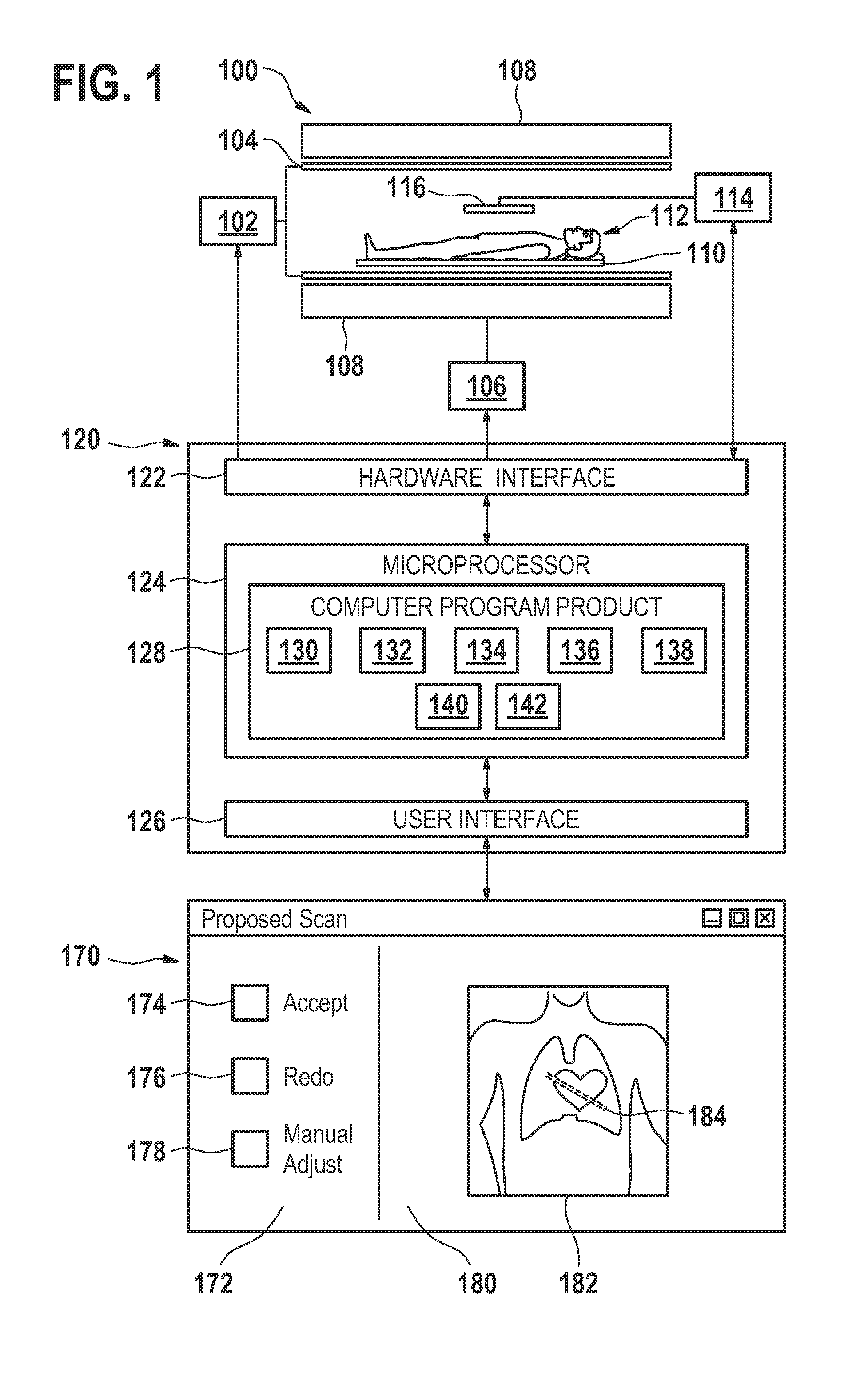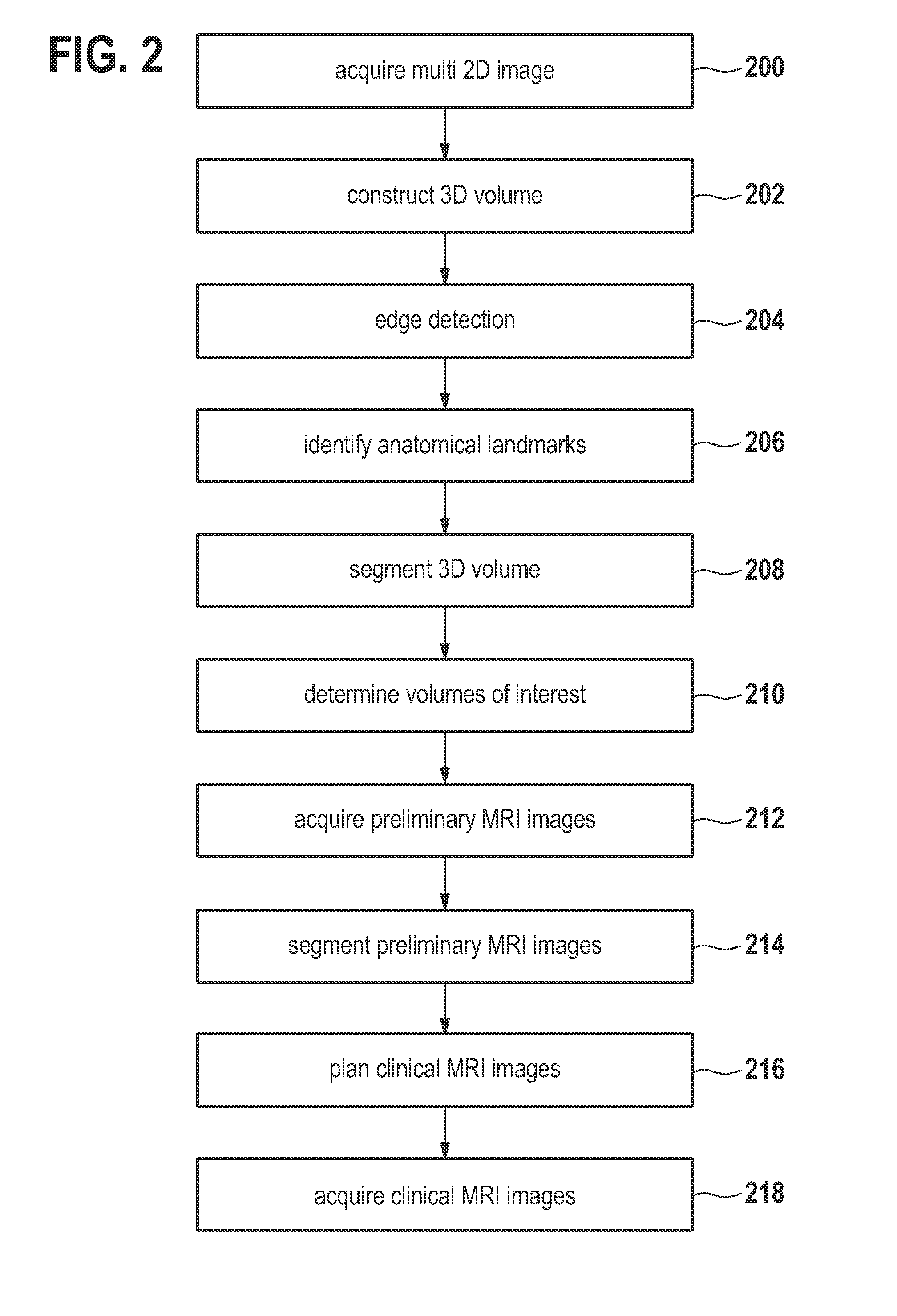Automated sequential planning of mr scans
a technology of mri and automatic planning, applied in the direction of nmr measurement, instruments, diagnostic recording/measuring, etc., can solve the problems of time-consuming operation, difficult to accurately image the anatomy of certain organs and parts of the body, and clinical images obtained by different operators will have different levels of quality, so as to control the quality of clinical mri images and save time
- Summary
- Abstract
- Description
- Claims
- Application Information
AI Technical Summary
Benefits of technology
Problems solved by technology
Method used
Image
Examples
example
Clinical Wrist Imaging
[0079]This example demonstrates an embodiment of the invention where two sequential, automated survey scans are performed and are used to automatically plan the acquisition of clinical MRI images. This example details a fully automated acquisition of clinical MRI images of the wrist. This is clinically relevant since the positioning of the wrist using the light visor is time consuming and error prone. Because of these difficulties, a first survey is often acquired only to locate the wrist. Then, a second survey that zooms in on the wrist region is acquired which is used for the actual planning of clinical images.
[0080]Automated sequential planning relieves the operator of the task of manually zooming to the correct wrist location and of planning the subsequent clinical image. The first survey is automatically processed to locate the wrist. A second zoomed survey is then used to plan the first clinical images.
[0081]In detail, an embodiment of the method consists...
PUM
 Login to View More
Login to View More Abstract
Description
Claims
Application Information
 Login to View More
Login to View More - R&D
- Intellectual Property
- Life Sciences
- Materials
- Tech Scout
- Unparalleled Data Quality
- Higher Quality Content
- 60% Fewer Hallucinations
Browse by: Latest US Patents, China's latest patents, Technical Efficacy Thesaurus, Application Domain, Technology Topic, Popular Technical Reports.
© 2025 PatSnap. All rights reserved.Legal|Privacy policy|Modern Slavery Act Transparency Statement|Sitemap|About US| Contact US: help@patsnap.com



